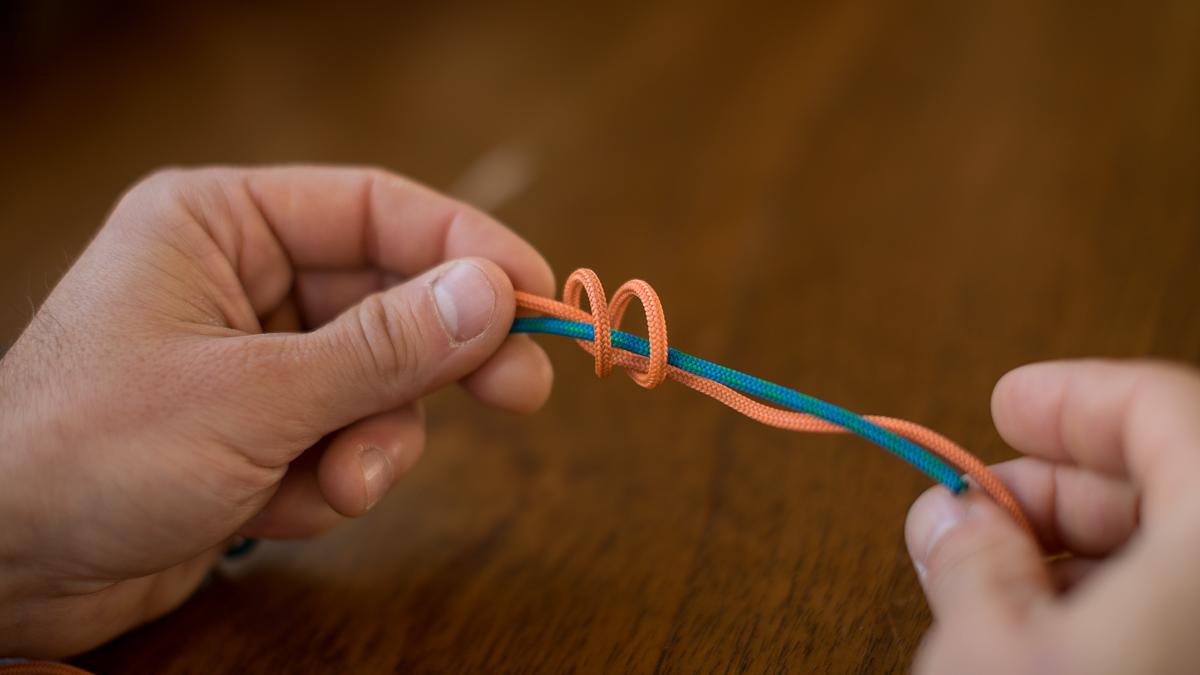
4 Simple Essential Knots Every Hunter Should Know
By Brad Brooks
At some point in your life, you have likely skimmed through a book that teaches you how to tie dozens of knots. And you would be a superior woodsman or woman if you knew how to tie 45 knots. But lets be real; the average hunter isn't going to get their Eagle Scout badge for knot memorization. The most common knots I see look like a cross between abstract art and a rats nest.
Knowing how to tie knots does have utility, particularly for hunting situations. Knowing a handful of the most valuable knots will help get you out of unexpected situations while hunting in addition to impressing your buddies. With the knots I discuss below, you can pretty much do what you need to in nearly any hunting or backpacking situation to fix gear, tie up big game quarters efficiently, guy out your tent, hang your gear from your tree stand, or splint your buddy's leg.
As a climber it's important to know how to tie knots properly since your life literally depends on it. But even though I can tie a fair number of knots, I a handful 95% of the time. The same is true with hunting. There are a lot that can be tied, but there are really only a handful that are "essential" knots that are used frequently due to their utility and ease of use.
If you can master these knots, you can impress your hunting buddies with your outdoors prowess. All of these knots are easy to tie and once you do them a few times, you will almost certainly remember how to tie them.
1.Flat Overhand Knot (AKA the Euro Death Knot)
This is perhaps the most simple knot to tie and is also incredibly useful. The Flat Overhand knot is what I and many climbers use to tie climbing ropes together when repelling due to the fact that the knot won't slip, is incredibly strong, has low bulk, and importantly it is easy to undo even after you have put it under heavy weight. It is lovingly referred to in the rock climbing world as the Euro Death Knot although why it has earned that name is unclear as untold numbers of climbers use it regularly to repel with. But I like the Euro Death Knot as a name better than the Flat Overhand.
Most Common Uses
This knot is best used to tie two pieces of rope, shoe lace or cord together. If you've ever broken your boot lace while out hunting and don't have an extra pair with you, this knot will save your bacon. It requires a minimal amount of shoe lace, isn't bulky, and your shoe laces will break before this knot does. It also comes in handy when you need to tie two pieces of rope or paracord together.
How to Tie
To begin, 1) Take the tail end of two pieces of cord or rope and hold them so the ends are equal to each other; 2) Twist the ends down and across the main rope, which will create a loop; 3) Bring both ends through the loop and 4) pull it tight. Simple as that.
1. 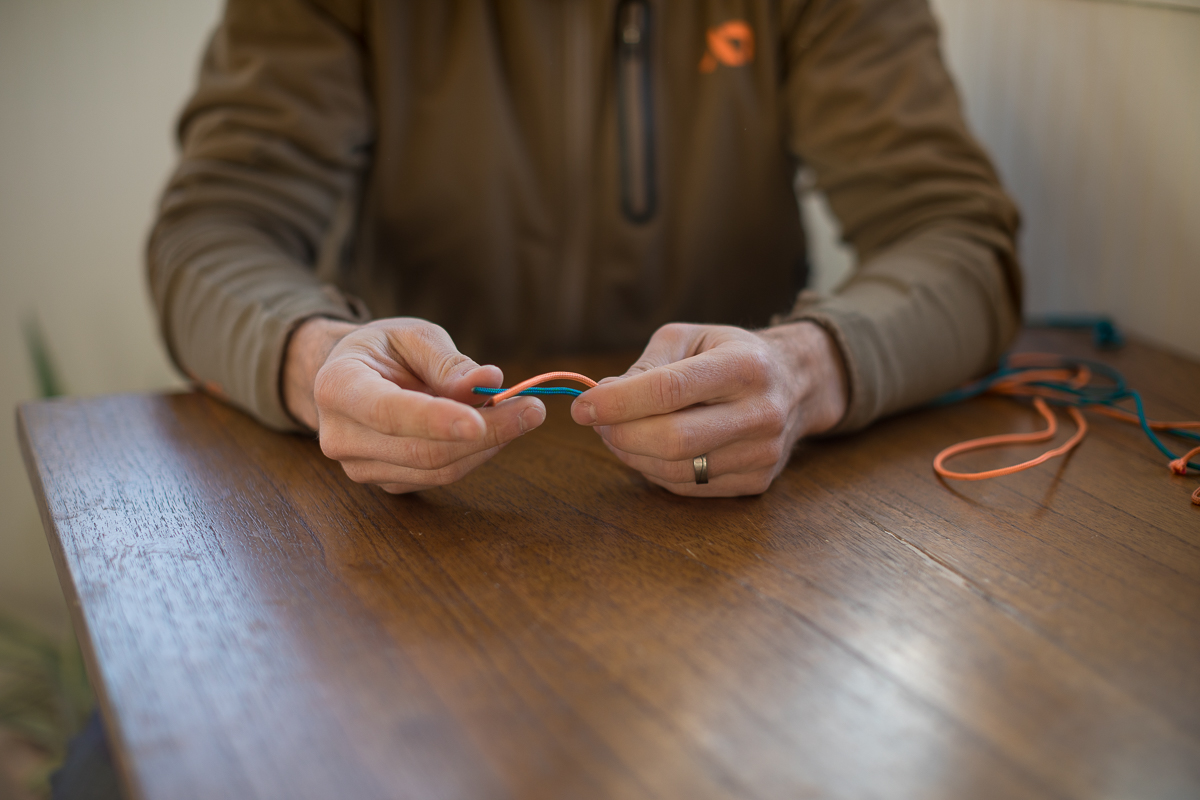 2.
2. 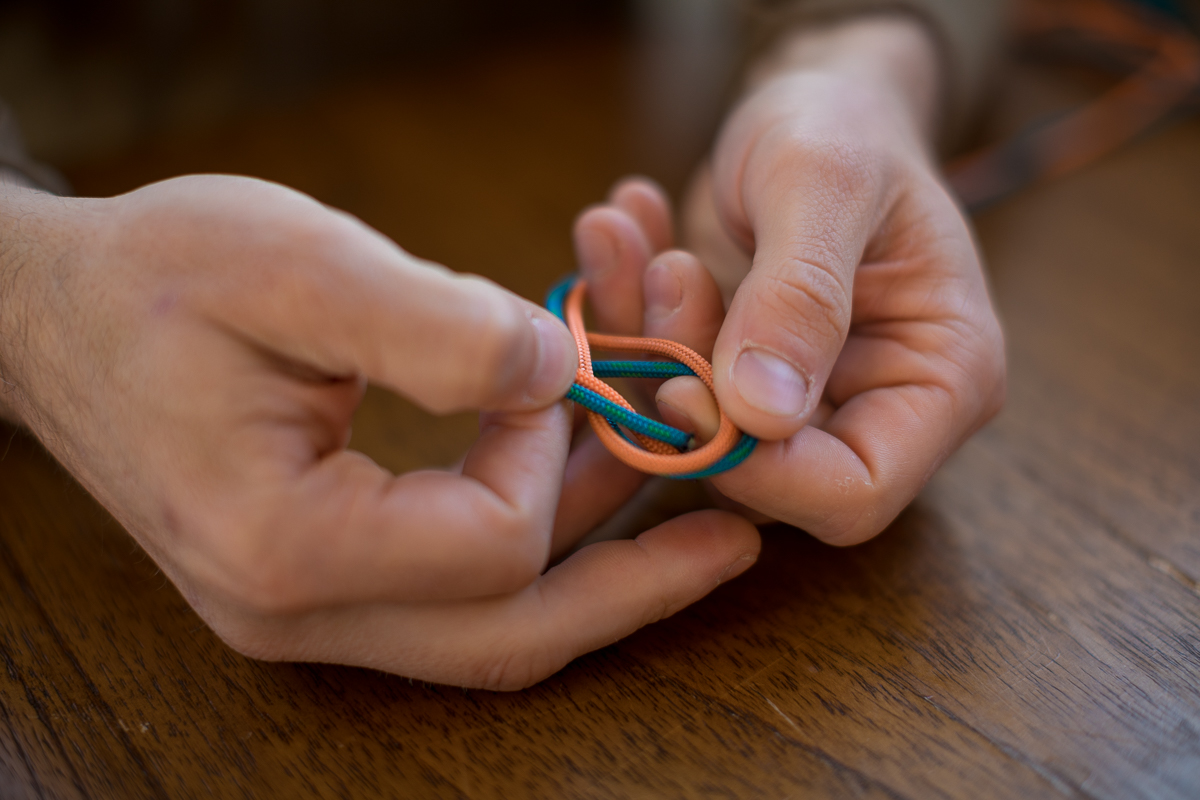
3. 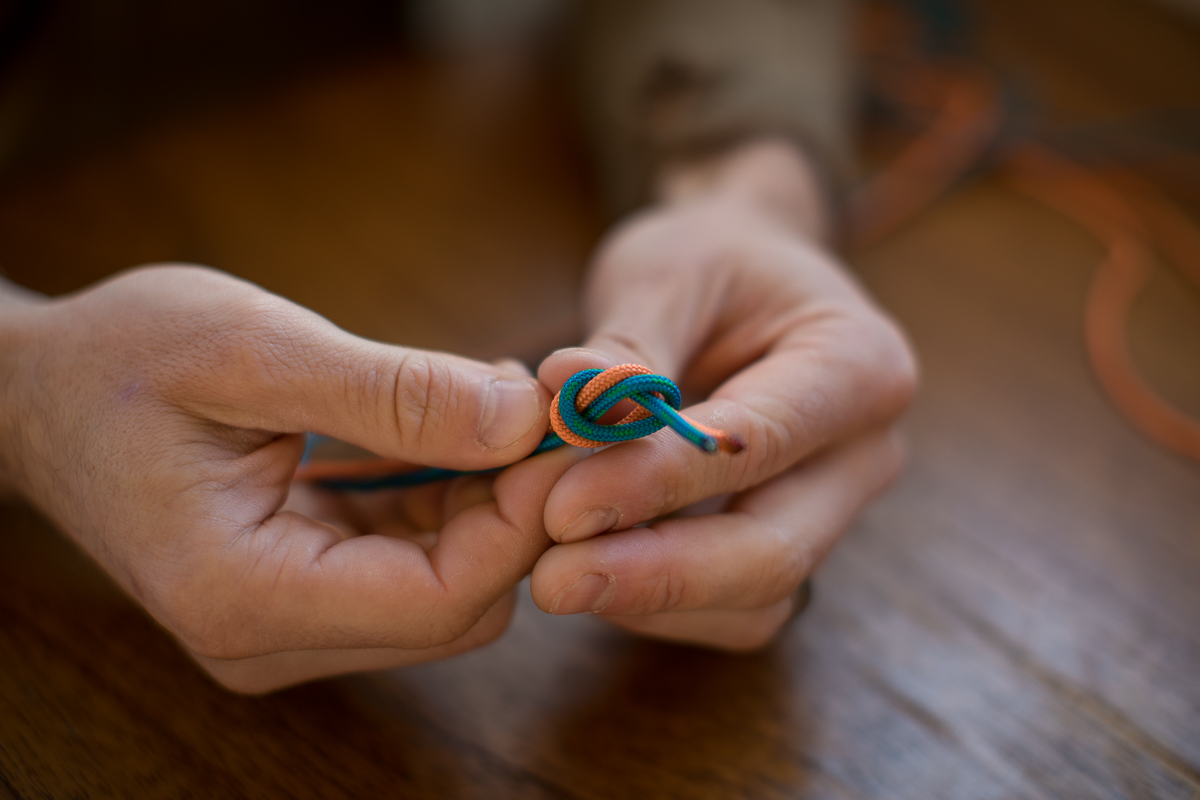 4.
4. 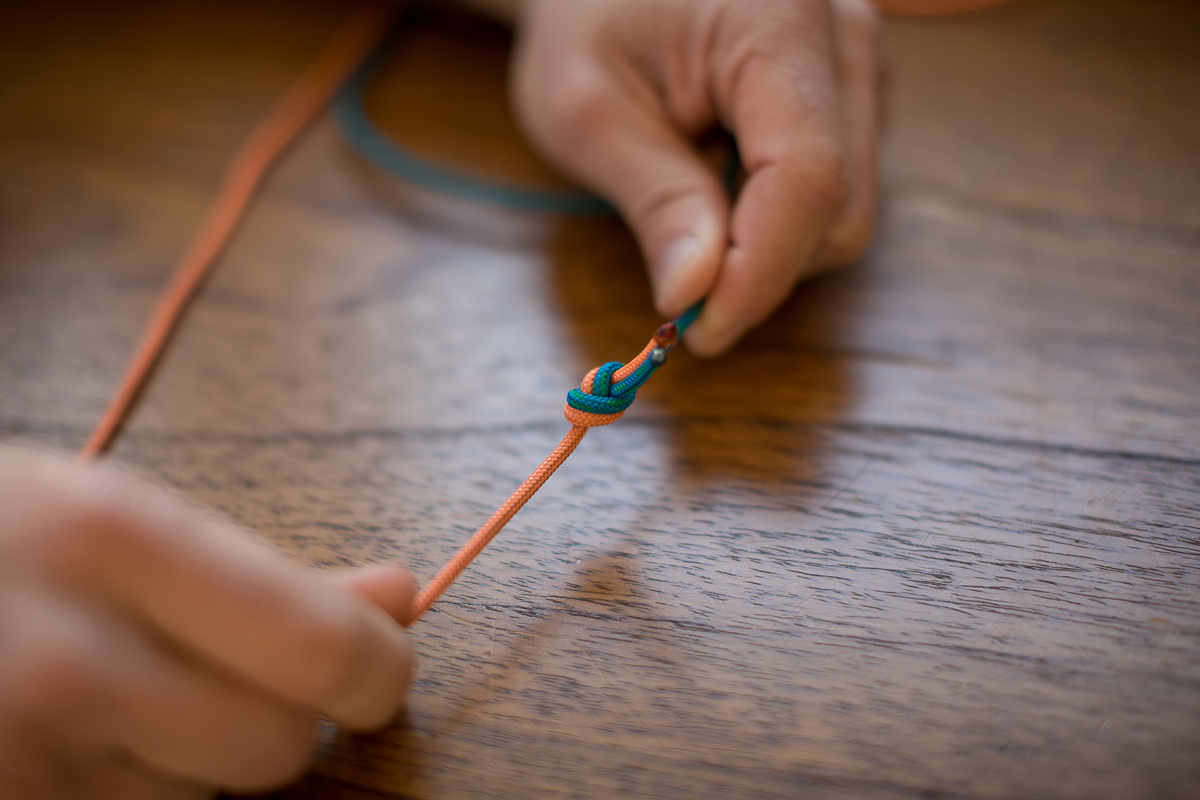
2. Double Half Hitch
The double half hitch knot has incredible utility and is very simple and easy to tie. I use this know frequently when tying down loads because it it easy to tie when your rope or paracord is taught. This knot is great for hanging game quarters, and it is useful to guy-out tents, hang food bags and anything else where you need a simple, strong, quick knot. One of the greatest advantages of this knot is that it can easily be done with one hand so you can use it to hang an elk quarter by yourself quickly and with relative ease once you get the hang of it. And while it will not slip under load, it comes undone easily even after being weighted. This is also the fastest way to secure an elk quarter while your hunting partner struggles to hold it in the air. Try it and you'll see why.
Most Common Uses
In addition to being my go-to knot for hanging quarters, the double half hitch is useful in securing any load, tying off tag-ends, guying-out tents, securing a load to the top of your car, tying off a food bag and any number of endless situations where you need to secure a load.
How to Tie
Just remember the mantra "around, over and down" (for ease of display with photo's I've used a metal hanger to demonstrate how to tie this) . When tying quarters or anything else: 1) bring your paracord around the game bag (or whatever else you are hanging); 2) bring the cord under the main line coming down and wrap it over the top; 3) then bring it down through the loop that has been created. 4) Pull the tag end of the cord tight. After pulling the tag end the first "hitch" will bite on your load (game bag or quarter) and un-weight it for you. Now for your second hitch do the exact same thing again by bringing your tag end 5) around your main line, 6) down through the loop you created, and 7) pull it tight.
1. 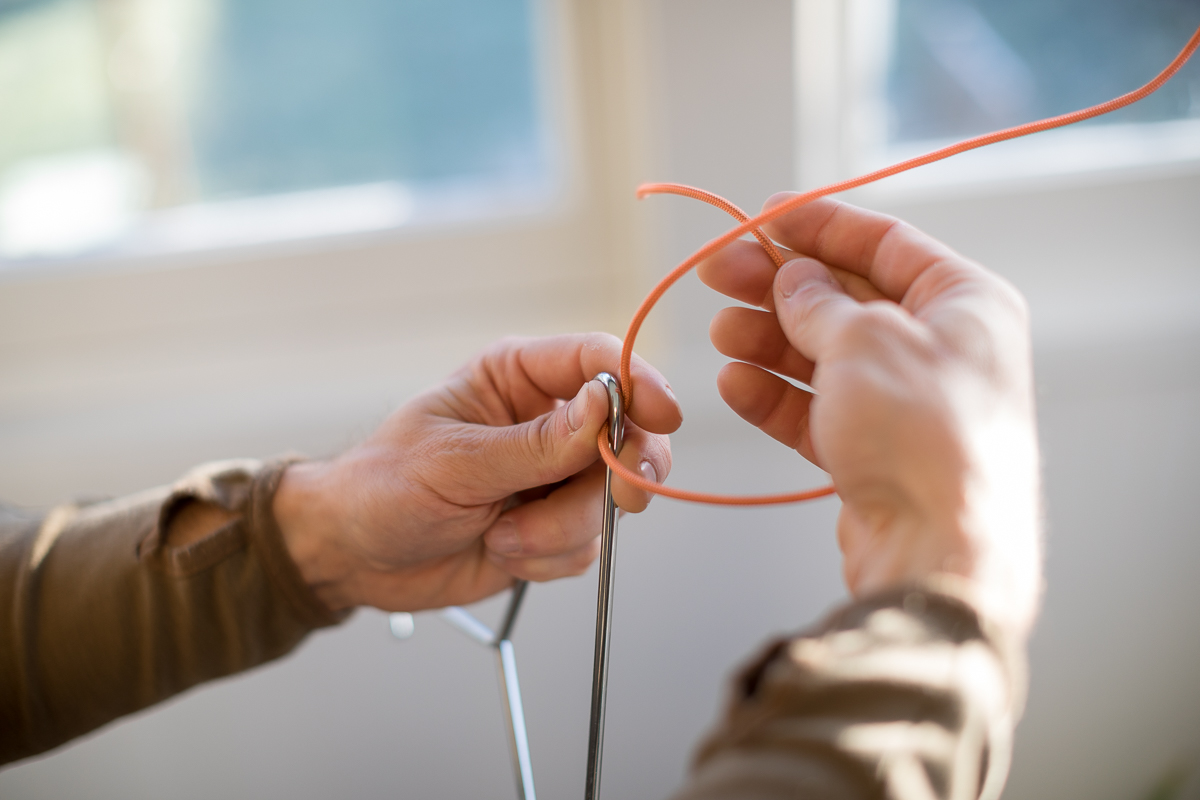 2.
2.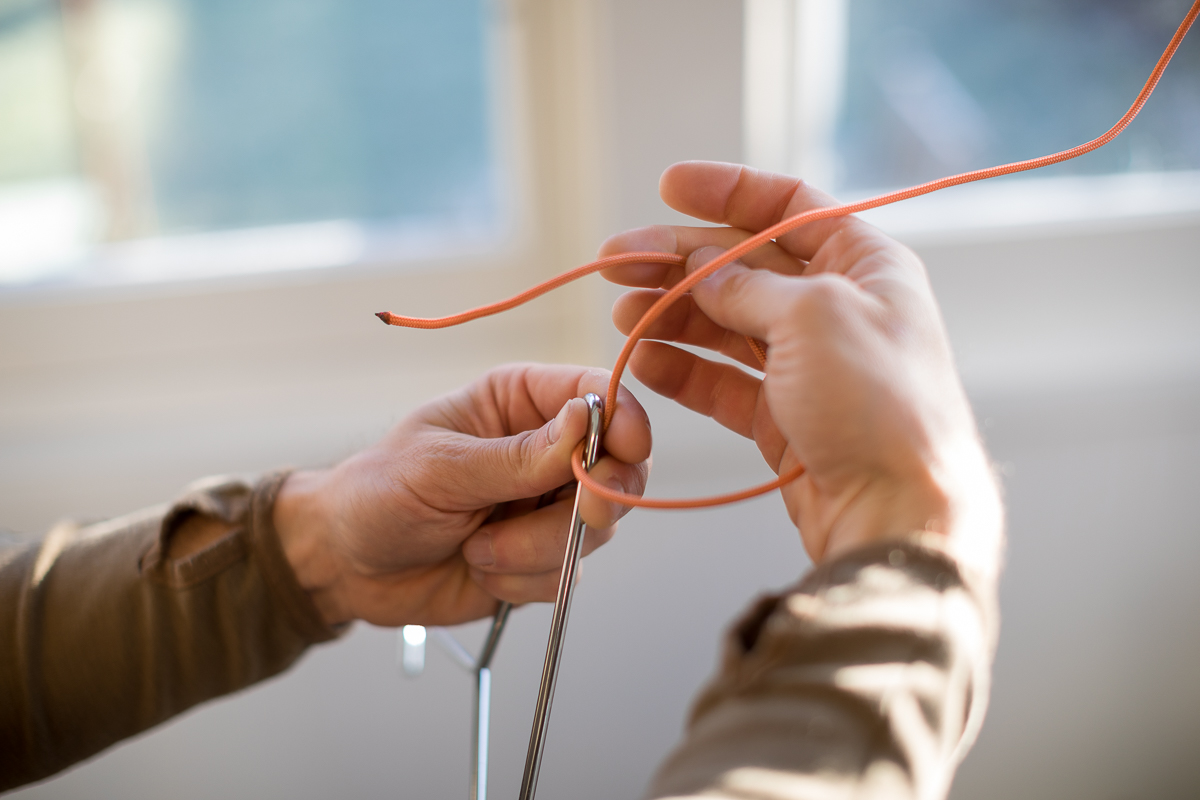
3-4.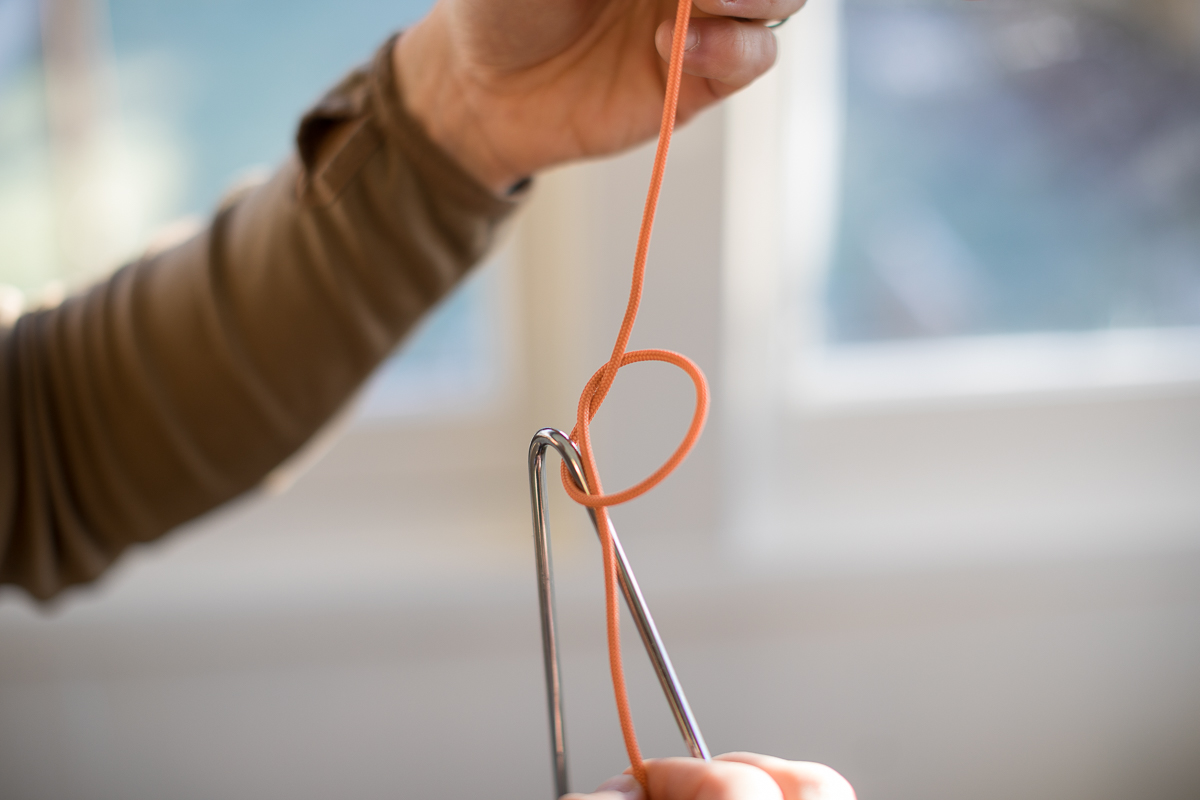 5.
5.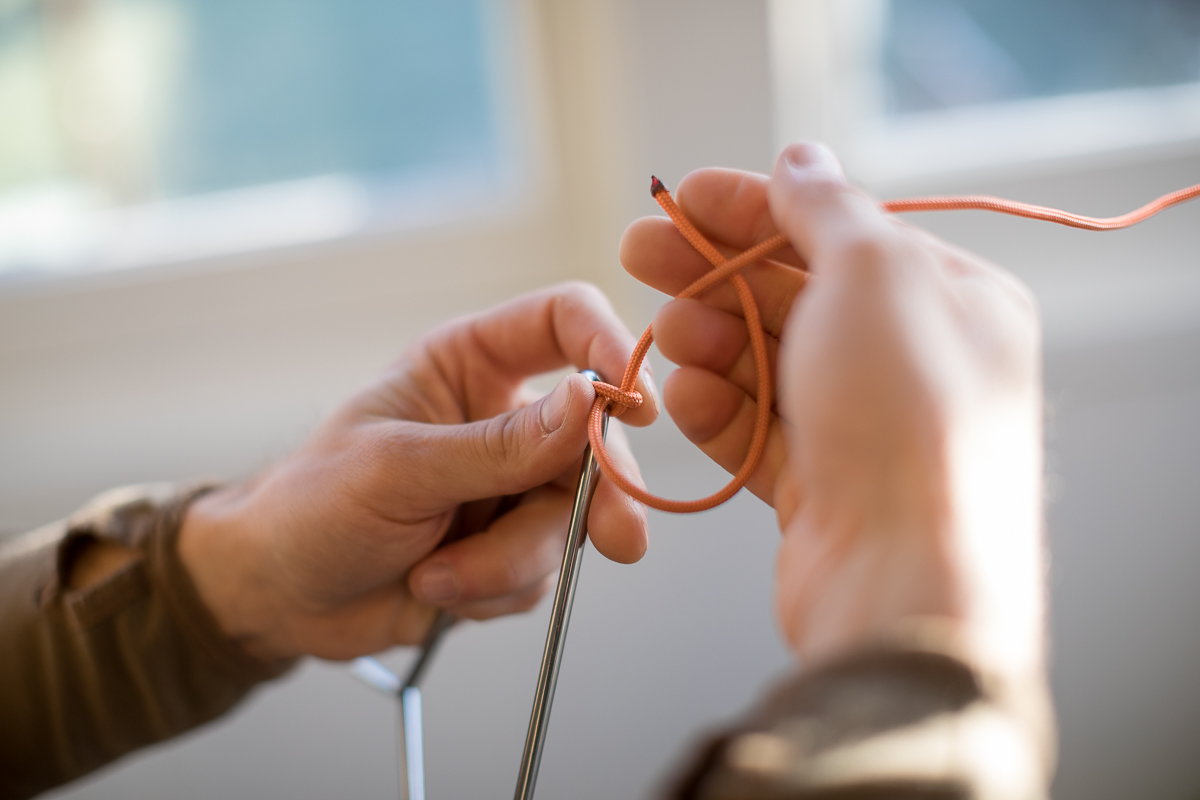
6. 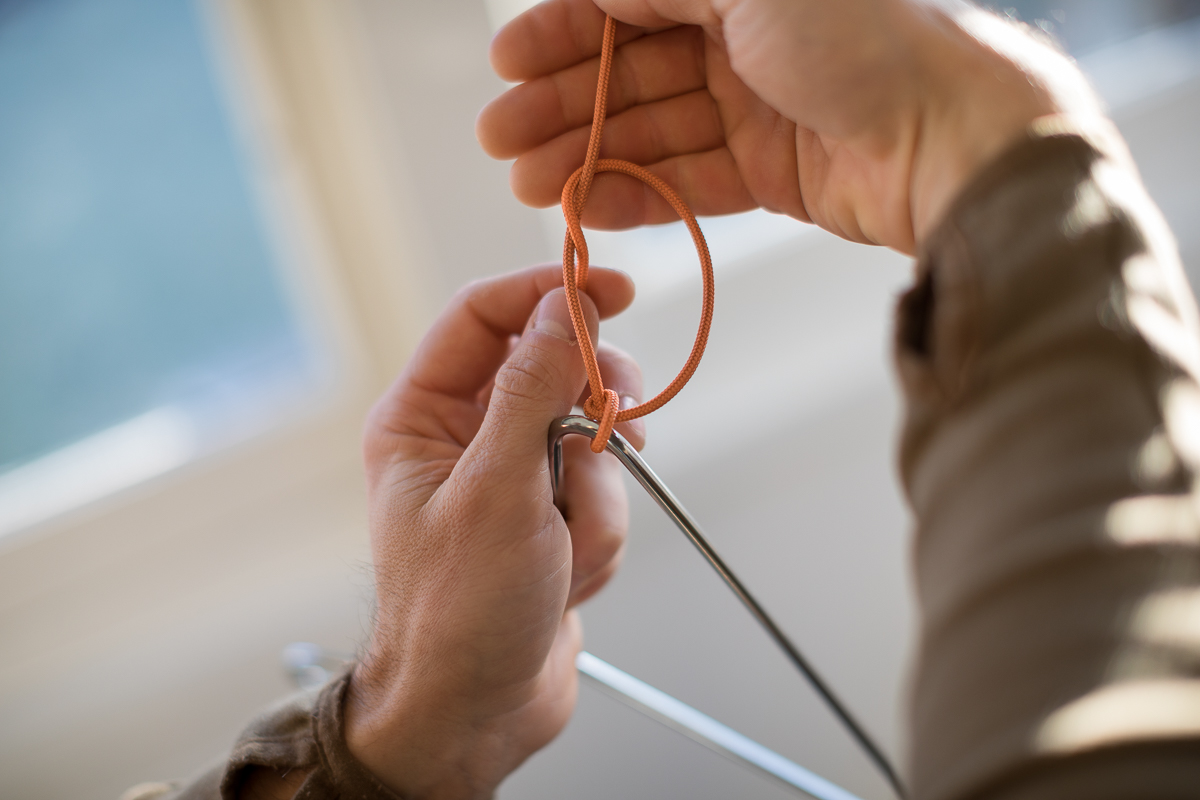 7.
7. 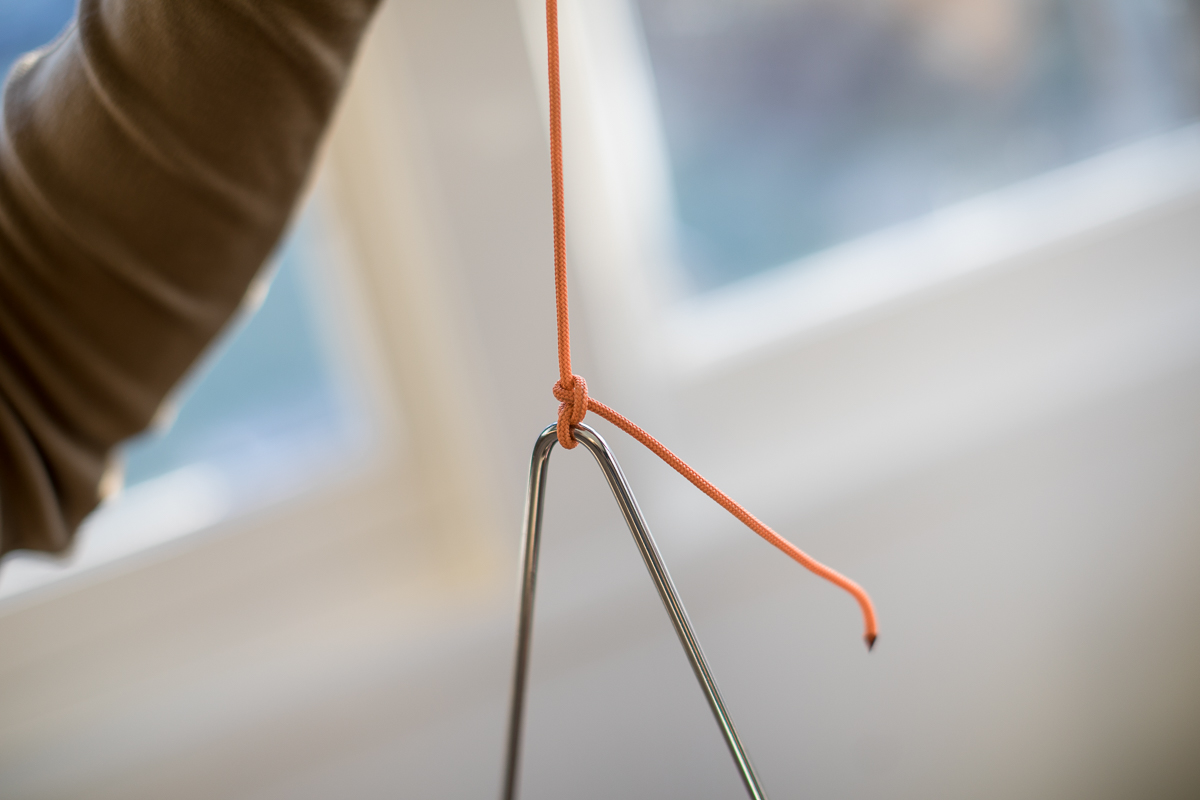
3. Double Fisherman's Loop
The Double Fisherman's Loop is most commonly use to tie two pieces of cord or rope together, but it is used frequently to make "loops" of cord or rope to fix bags, harnesses or other gear. The greatest advantage of the Double Fisherman's Loop is that you can adjust the knot to precisely the length you want, and once you snug it down, it won't slip.
This knot came in handy one year in particular for me when I was on an elk hunt and the straps that connected the panniers to the pack saddles of our llamas broke. The Double Fisherman's knot was the perfect fix as it allowed me to make several loops of 3mm paracord that were exactly the same size that we could hook around the pack saddles.
Most common uses
Fixing backpacks and other gear (particularly when you need to make a loop of gear), tying two pieces of cord or rope together.
How to Tie
To tie this knot you are essentially tying two separate "sliding" knots that will be pulled up against each other. To tie this knot, 1) take two tag ends and run them parallel to each other in opposite directions; 2) take one of the tag end and wrap it 2 full wraps back around both of the pieces of rope or cord (be sure to leave yourself enough tag end to work with) so when you are done you have two loops going over both tag ends. 3) Thread your tag end through the two loops you just created and 4) pull it tight. You should have a knot that slides. 5) Now do the exact same thing with the other tag end. 6) When you have completed both knots, pull them tight together.
1. 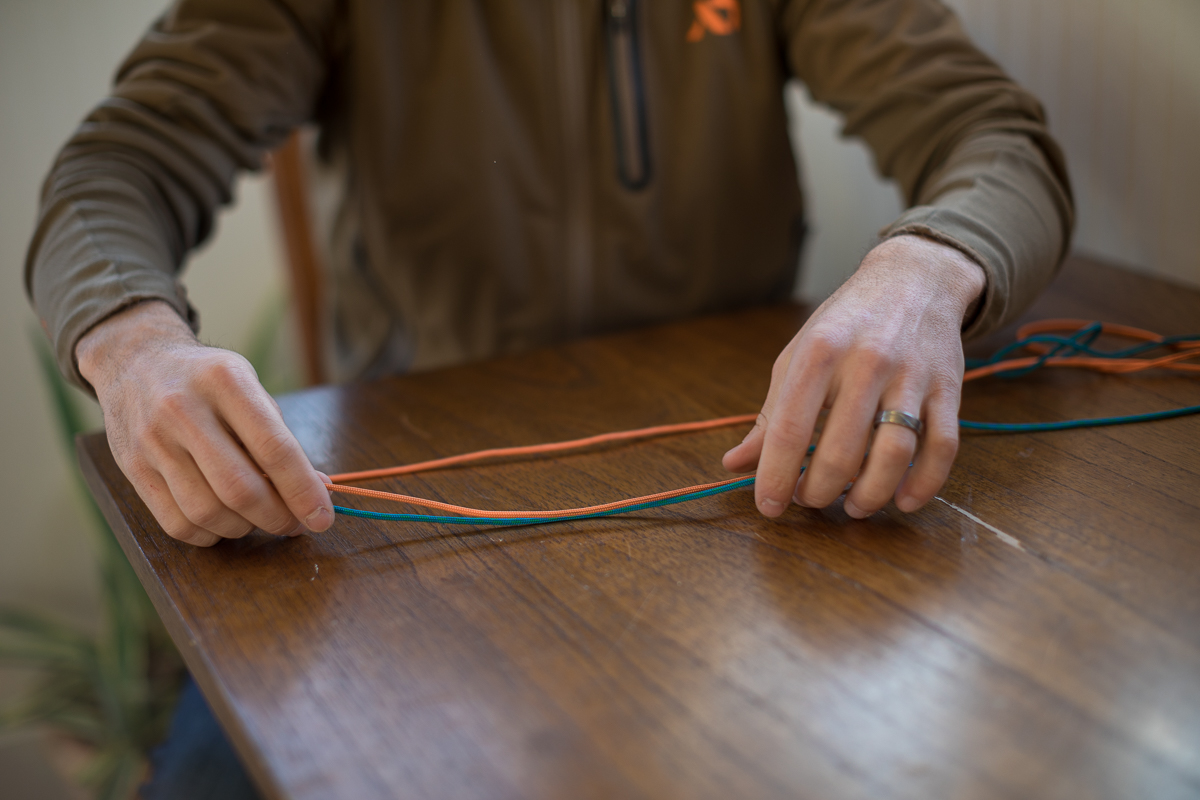 2.
2. 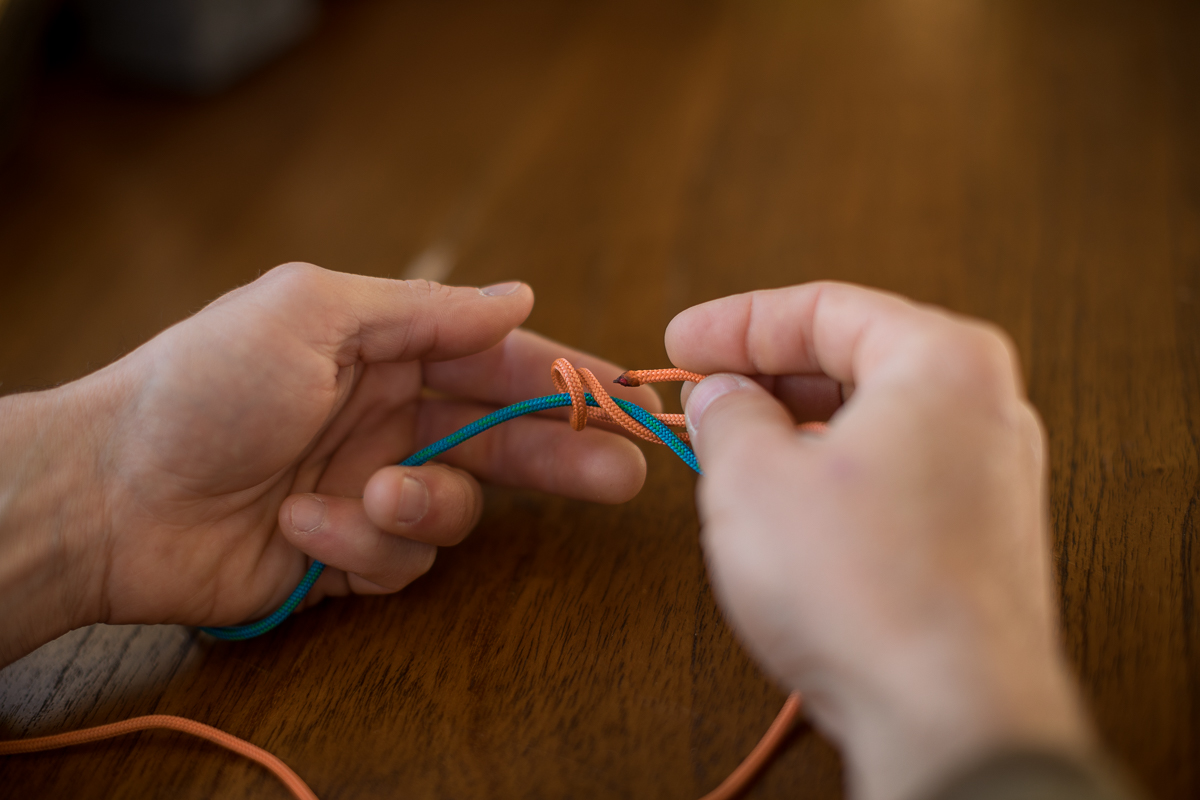
3. 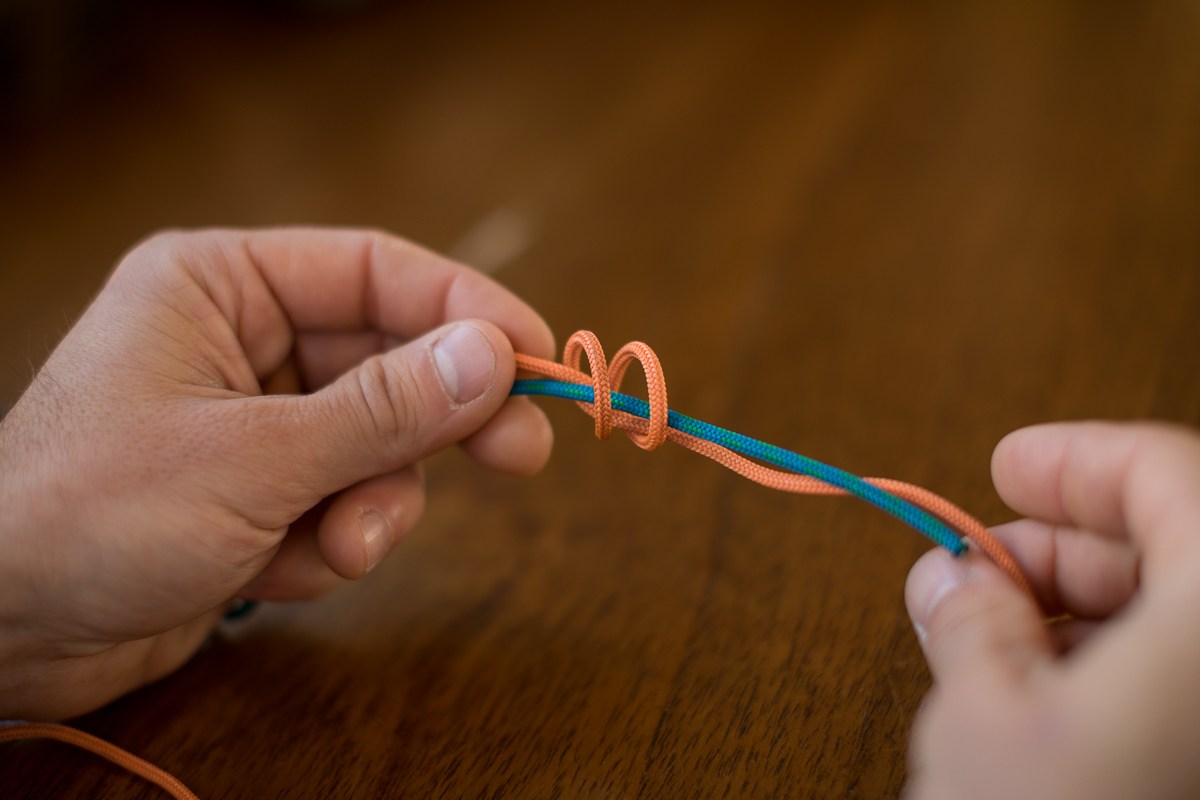 4.
4. 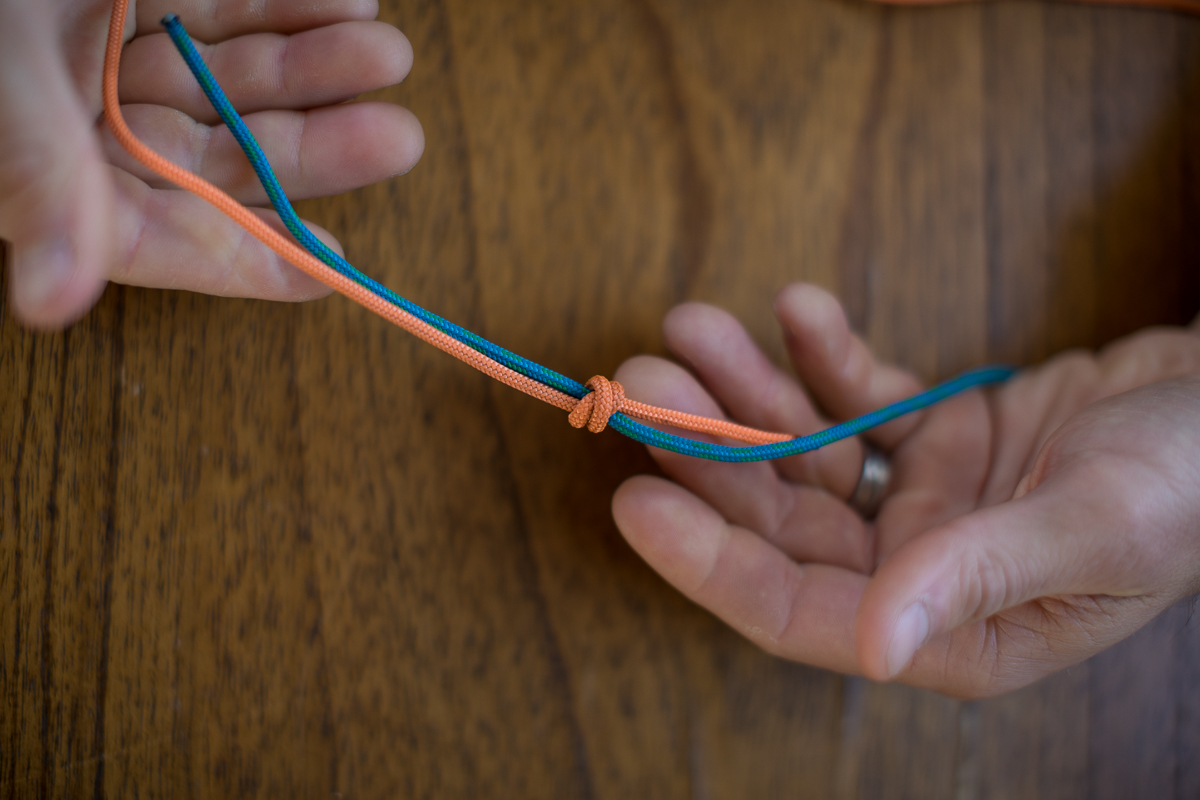
5. 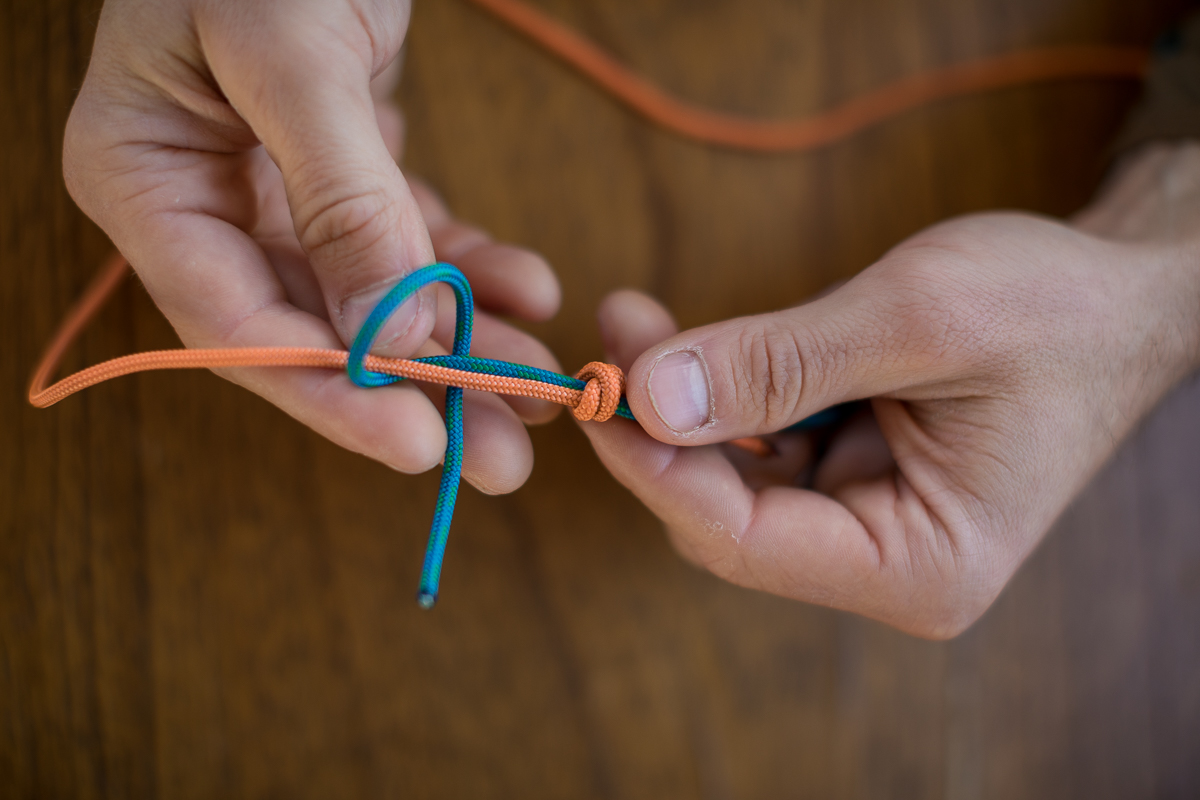 6.
6. 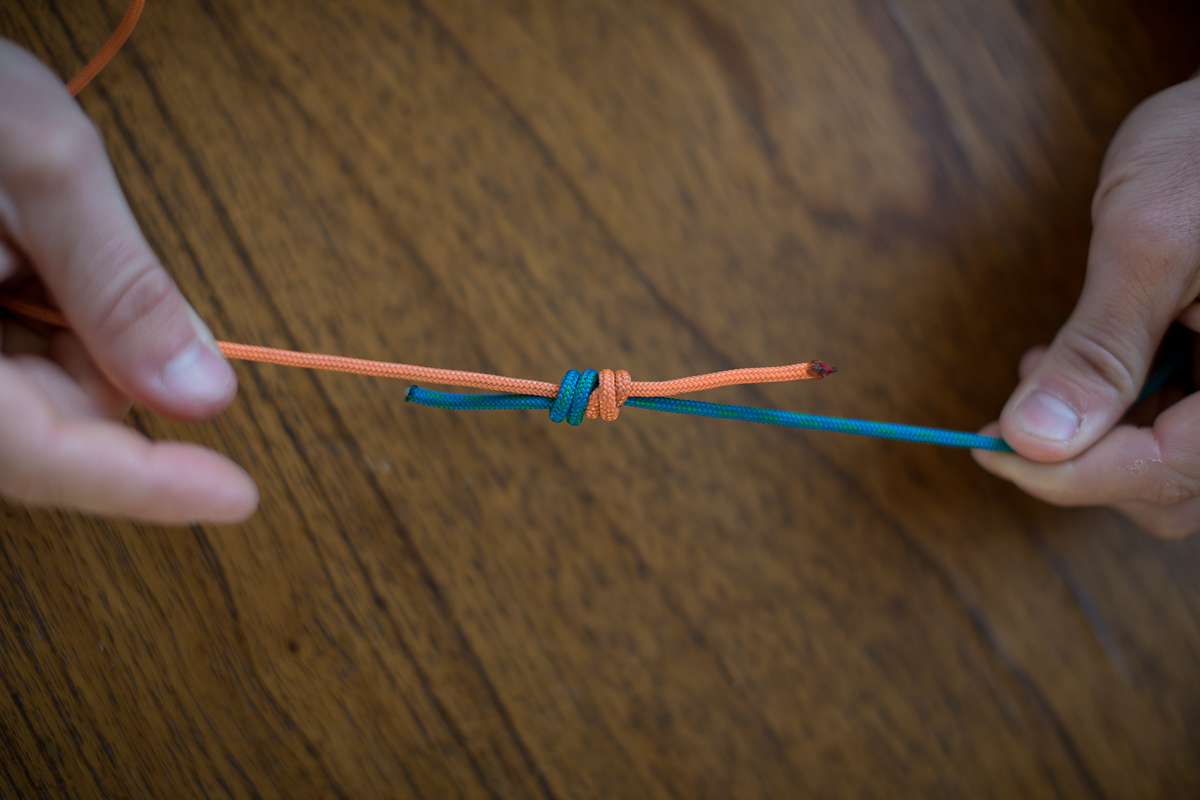
4. Clove Hitch
This is one of my all-time favorite ways to quickly secure a load. Unlike a traditional knot, you don't have to have the end of your rope to tie this hitch, which makes it ideal for tying off a load to a snag or tree branch (such as tying off an elk quarter) no matter what part of your rope or paracord strand you have. I've used this hitch countless times to tie myself into rock faces, tie off tents, tie rafts and boats to shore, hang food and dozens of other uses. Like all of the other knots, this one is incredibly simple, easily comes undone when not under weight, yet has the advantage of easily being shortened or lengthened without undoing the knot. This hitch will also not budge if it is under any weight, and you can easily adjust the hitch to shorten or lengthen the cord or rope.
Most Common Uses
Securing any load, tying off rafts or boats, guying out a tent, hanging a food bag, hanging game quarters.
How to Tie
With a single strand of rope, 1) make a twist in the rope so it creates a loop and pinch the loop between your thumb and forefinger. 2) Make a second loop twisting the rope in the exact same way and pinch it between your other thumb band forefinger. 3) Bring the second loop and put it in front of the first loop (this is the step most people struggle with, and if you don't do this one properly, you will know because when you pull your ends tight the knot will come undone). 4) Pull both ends of the rope tight.
1. 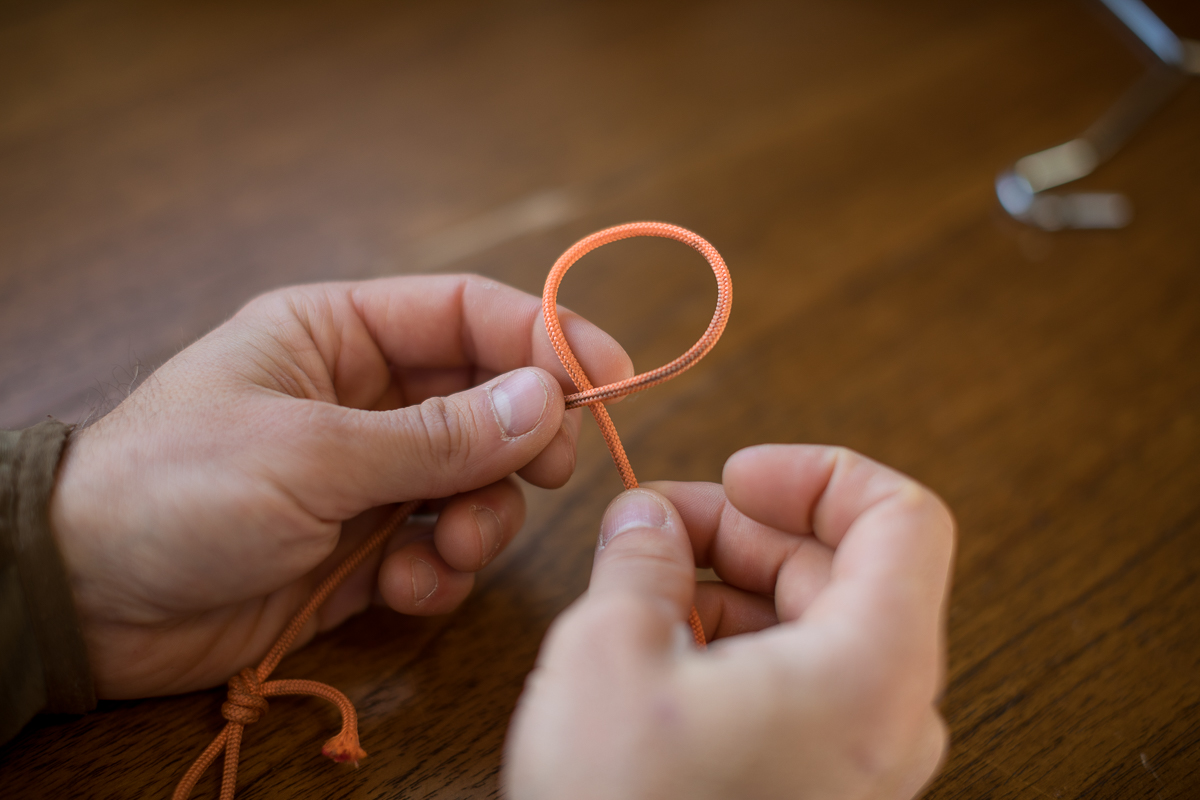 2.
2. 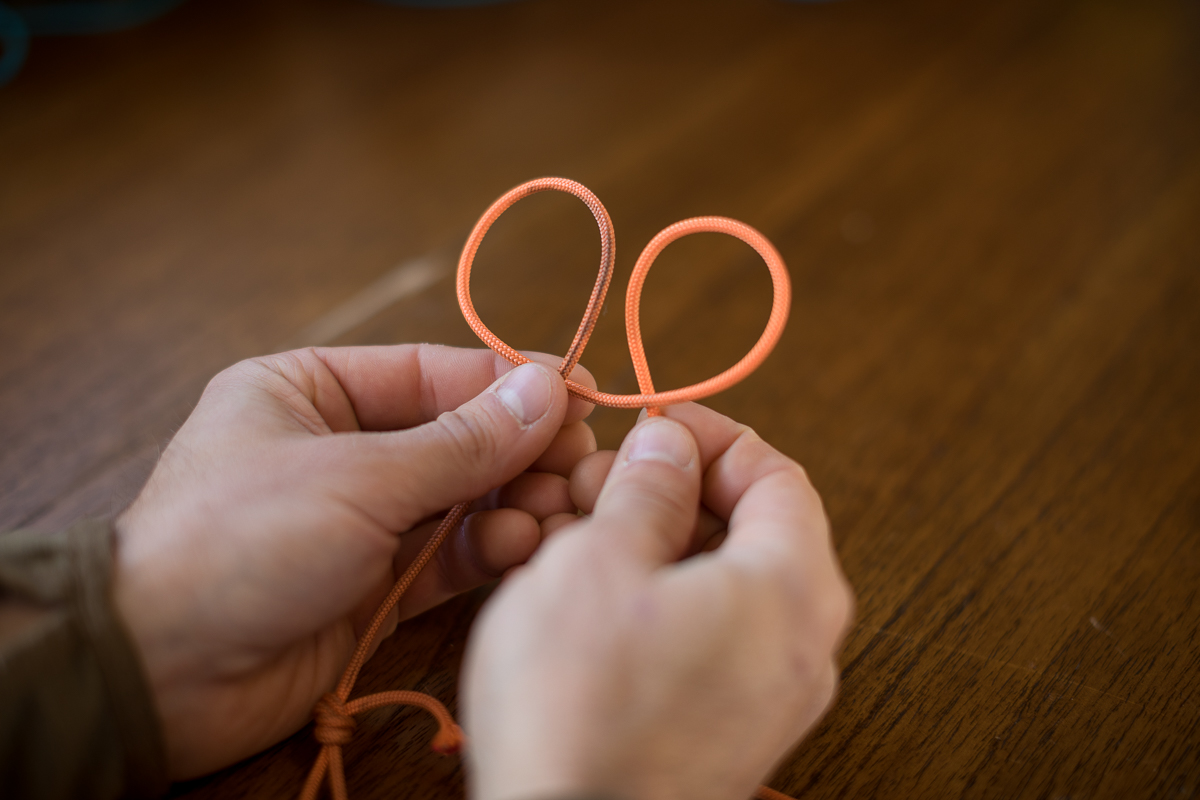
3. 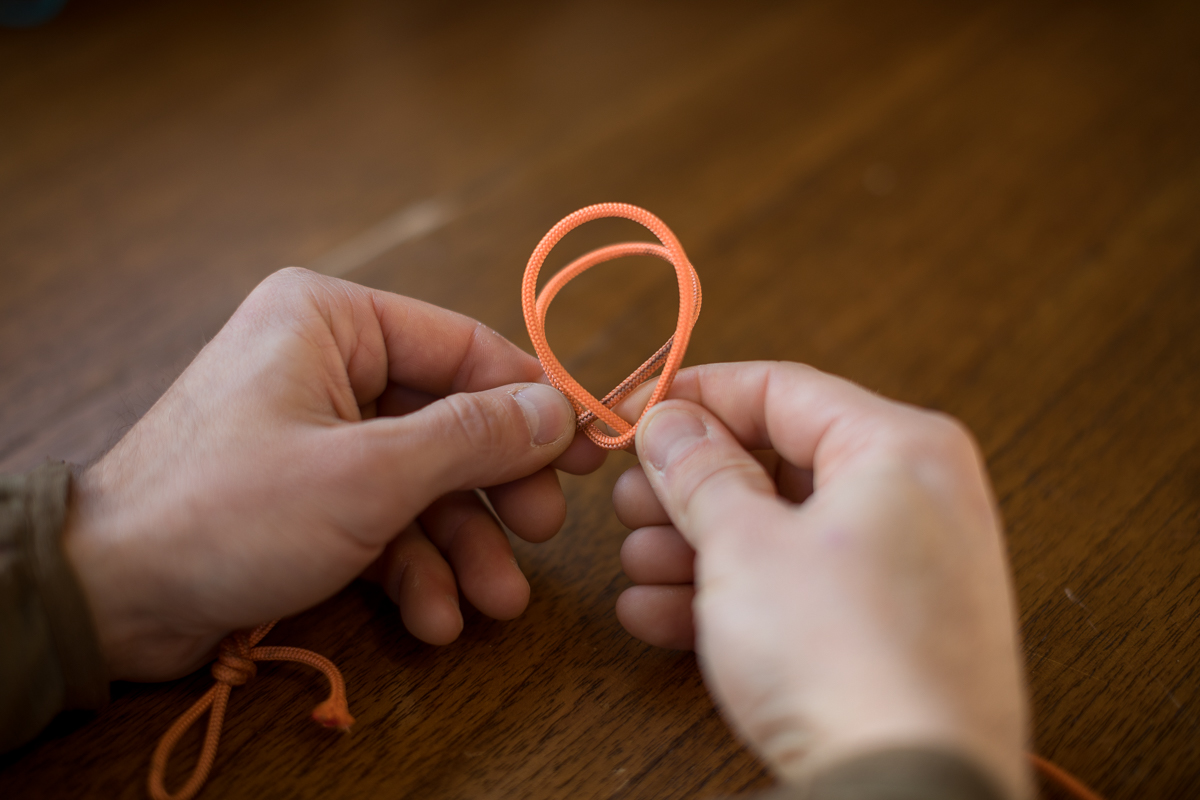 4.
4. 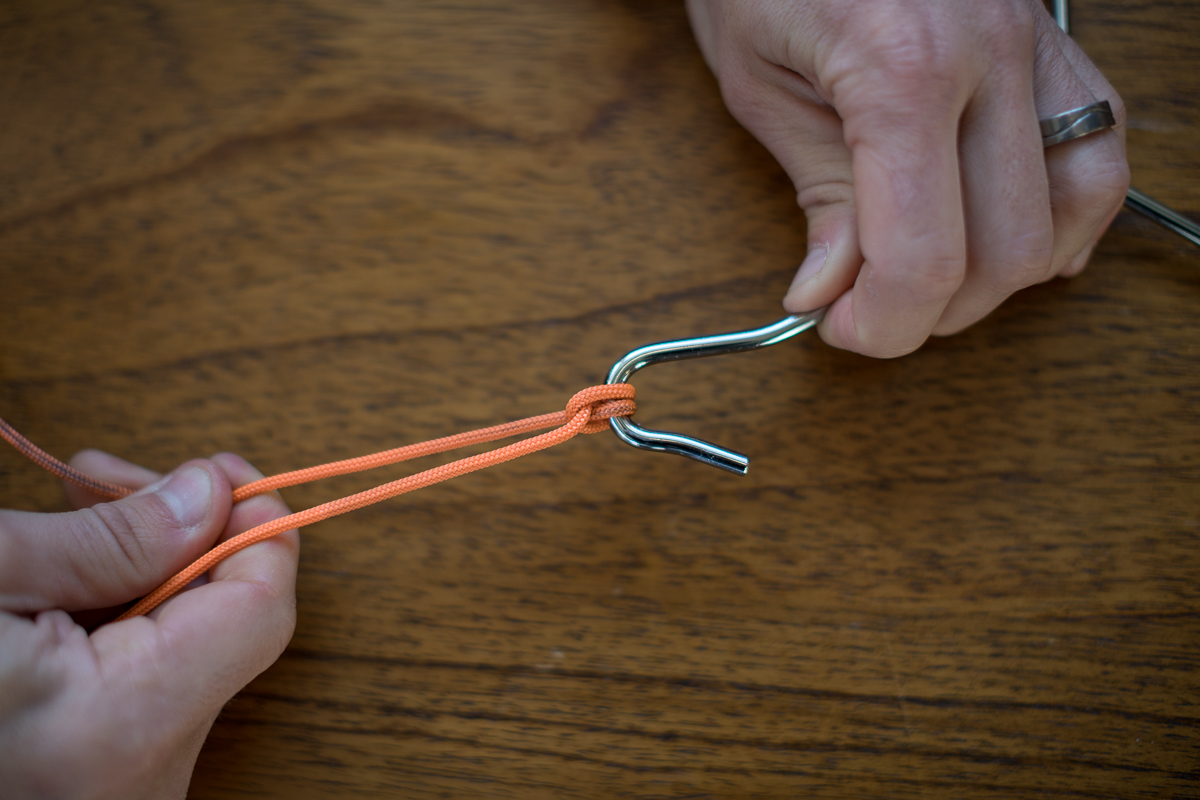
Let me know if you have any favorite knots I should add to this list in the comments below. I will acknowledge that the Bowline knot was hard (k)not to put in this article, so if you're a bowline person help me understand why it should be on my list.